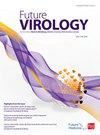Development of an in vitro model to study hepatitis C virus-induced fibrosis
IF 1.4
4区 医学
Q3 VIROLOGY
引用次数: 0
Abstract
Aim: To investigate the mechanism of liver fibrosis in chronic hepatitis C virus (HCV) infection we developed an in vitro model. Methods: Huh7 cells were transfected with HCV (JFH1 or Jc1) or sub-genomic replicons and expression of pro-fibrotic cytokines determined by qPCR. Media from infected cells was transferred onto LX2 cells or primary rat stellate cells and expression of pro-fibrotic genes measured by qPCR. Results: Replication competent HCV, but not sub-genomic replicons, induced expression of TGF-β1 and CTGF. Supernatant from infected cells induced α-SMA and COL1A1 expression and stellate cell migration, confirming functional activation. Conclusion: Infected cells produce pro-fibrogenic cytokines TGF-β1 and CTGF and activate stellate cells. This mechanism could be targeted to prevent or treat HCV-induced fibrosis.丙型肝炎病毒诱导纤维化体外模型的建立
目的:建立慢性丙型肝炎病毒(HCV)感染肝纤维化的体外模型,探讨其发生机制。方法:用HCV (JFH1或Jc1)或亚基因组复制子转染Huh7细胞,用qPCR检测促纤维化细胞因子的表达。将感染细胞的培养基转移到LX2细胞或原代大鼠星状细胞上,用qPCR检测促纤维化基因的表达。结果:可复制的HCV可诱导TGF-β1和CTGF的表达,而亚基因组复制子则不能。感染细胞的上清液诱导α-SMA和COL1A1表达和星状细胞迁移,证实功能激活。结论:感染细胞产生促纤维化因子TGF-β1和CTGF,活化星状细胞。这一机制可用于预防或治疗丙型肝炎病毒诱导的纤维化。
本文章由计算机程序翻译,如有差异,请以英文原文为准。
求助全文
约1分钟内获得全文
求助全文
来源期刊

Future Virology
医学-病毒学
CiteScore
4.00
自引率
3.20%
发文量
84
审稿时长
6-12 weeks
期刊介绍:
Future Virology is a peer-reviewed journal that delivers essential information in concise, at-a-glance article formats. Key advances in the field are reported and analyzed by international experts, providing an authoritative but accessible forum for this ever-expanding area of research. It is an interdisciplinary forum for all scientists working in the field today.
 求助内容:
求助内容: 应助结果提醒方式:
应助结果提醒方式:


